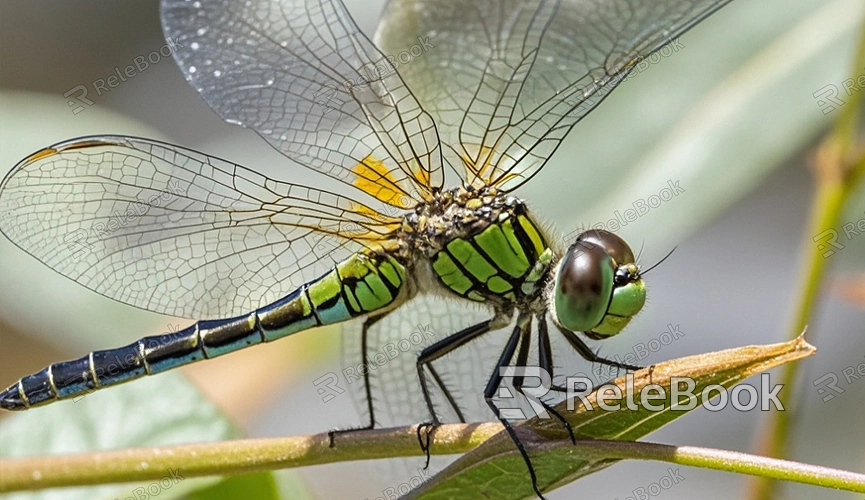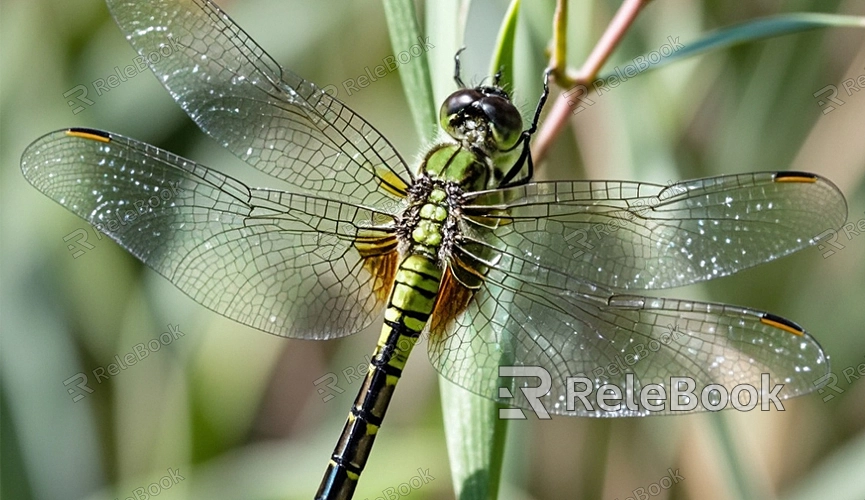How to Create a 3D Dragonfly Model?
With the rapid development of technology, 3D modeling has become an essential skill in various fields, from game development and animation production to product design. With their unique and beautiful appearance and agile flight, dragonflies have become a popular subject for designers alike. This article will provide a detailed guide on creating a realistic 3D dragonfly model, covering everything from basic knowledge to practical steps, helping you advance on your creative journey.

Understanding the Basic Features of a Dragonfly
Before starting the modeling process, it's crucial to have a solid understanding of the dragonfly’s basic characteristics. A dragonfly’s body is typically divided into three main sections: the head, thorax, and abdomen. The head features compound eyes and antennae; the thorax holds the wings and legs; and the abdomen is a long, slender structure comprising the main body.
Additionally, a dragonfly’s wings are known for their transparent texture and intricate patterns of veins. These features need special attention during the modeling process to ensure realism. Before you begin, it’s helpful to study reference images and videos of dragonflies to get a better grasp of their physical characteristics.
Choosing the Right Modeling Software
Choosing the right modeling software is key to creating a 3D dragonfly model. Several software options are available, such as Blender, Maya, and 3ds Max. For beginners, Blender is an excellent choice as it is free, open-source, and has an active community with plenty of learning resources.
Whichever software you choose, becoming familiar with its basic operations is essential for successful modeling. You can improve your skills by watching video tutorials, reading official documentation, and taking online courses.

Starting the Modeling Process
1. Creating the Base Shapes
In the modeling software, begin by creating the base shapes of the dragonfly. You can use simple geometric shapes such as rectangles and cylinders to form the dragonfly’s body. Adjust the size and shape of these geometries to match the dragonfly’s real-life proportions.
Next, use the subdivision surface feature to smooth the surface of the model, making it look more natural. During this process, ensure that the proportions and shapes of the dragonfly’s different parts are maintained to keep the overall model balanced.
2. Adding Details
Once the base shape is completed, it’s time to add details. This includes modeling the dragonfly’s compound eyes, antennae, and other intricate features of the head, as well as adding more complexity to the thorax and abdomen. Using sculpting tools can help enhance the level of detail, making the model more lifelike.
When working on the wings, you can use transparent materials and textures to replicate the dragonfly’s signature look. Use UV unwrapping tools to unfold the surface of the wings, which will make it easier to apply textures later on.
Texturing and Materials
1. Creating Textures
Textures are crucial for giving the model a realistic appearance. You can create textures using image editing software like Photoshop or GIMP. Based on the dragonfly’s appearance, draw the appropriate patterns and colors and save them in a format compatible with your modeling software.
2. Applying Materials
In the modeling software, apply the textures to the model. Use different material settings, such as reflectivity and transparency, to simulate the glossy and delicate nature of the dragonfly’s wings. Meanwhile, choose suitable materials for the body and head to add depth to the model.
Animation and Rendering
If you want your dragonfly model to not only be static but also animated, the next step is to set up bones and animations for the model. By creating a skeleton within the software, you can animate the dragonfly to perform actions such as flying.
Once the skeleton is set up, use the animation tools to create different movements, giving the model a dynamic feel. After completing the animation, render the model to see the final result. The quality of the render will directly affect the visual impact, so choose render settings based on your project’s needs.
Exporting and Sharing
After completing the dragonfly model, the final step is to export it in a commonly used format such as FBX, OBJ, or STL. This allows the model to be used on other platforms or software. You can also upload the model to sharing websites to exchange feedback with other designers.
By following these steps, you’ll be able to create a stunning 3D dragonfly model. Although the process can take time and patience, each step will bring rewarding results to your creative work.
In this article, we explored in detail how to create a beautiful 3D dragonfly model. From understanding basic characteristics and choosing the right software to modeling, texturing, and animation, each step is crucial. We hope these guidelines inspire and equip you with the necessary techniques to create a stunning dragonfly model. If you need high-quality models and textures, feel free to visit Relebook to download them for your projects.
FAQ
What software is required to create a 3D dragonfly model?
Popular software includes Blender, Maya, and 3ds Max. Blender is free and open-source software that is ideal for beginners.
How do I choose the right reference images for a dragonfly?
You can search online for high-resolution images or videos of dragonflies to understand their detailed features. You may also consult entomology books for more accurate depictions.
How long does it take to create a dragonfly model?
The time it takes varies depending on the complexity of the model and the individual’s skill level. On average, the process from basic modeling to final rendering may take several hours to several days.
How do I add animation to my dragonfly model?
You can create a skeleton structure in the modeling software and use animation tools to set up movements, such as flying or resting poses.
Where can I find high-quality 3D dragonfly models and textures?
You can download high-quality 3D models and textures from Relebook, which offers a wide variety of resources to meet different project needs.

